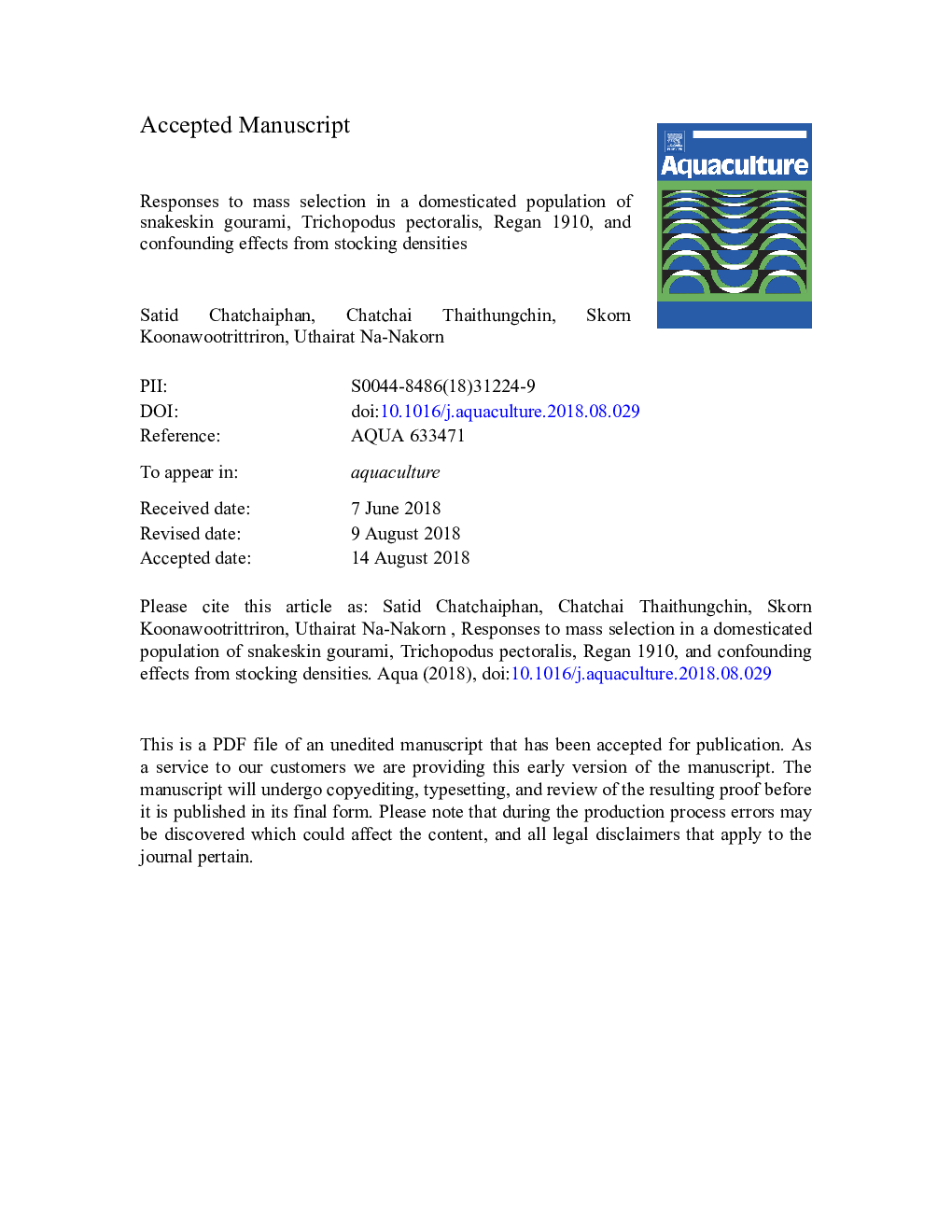| Article ID | Journal | Published Year | Pages | File Type |
|---|---|---|---|---|
| 10137297 | Aquaculture | 2019 | 19 Pages |
Abstract
Genetic improvement by farmers is beneficial for species with low economic value, as a way for farmers to access good seed stocks, and to maintain genetic diversity. However, concern has been raised whether the simple selection method is effective for the currently poorly managed culture stocks with long domestication history. In this study, mass selection was performed in a culture stock of snakeskin gourami, Trichopodus pectoralis, Regan 1910, to determine whether a simple mass selection would give positive selection response. The selection was performed based on total length, whereby the cut-off total length for females was 20.80â¯cm while all males were recruited due to limited number of morphologically distinct males available. This resulted in selection differentials of 1.44â¯cm for total length in females, and 0.20â¯cm in males (realized selection intensity was 1.412 and 0.210 for females and males, respectively). The results of the growth trial showed a positive but low selection response (Pâ¯<â¯.01; 2.90% of the control). The correlated responses for body weight, average daily growth, and average growth coefficient were positive (2.13-9.06% of the control) whereas a correlated response for survival rate was negative (â4.6% of the control). In addition, the high stocking density used in the growth trial obscured the selection response, which was more apparent at low stocking densities. The recommendation was made that mass selection has potential to improve growth of snakeskin gourami and thus should be introduced to farmers, and that the selection intensity should be increased.
Related Topics
Life Sciences
Agricultural and Biological Sciences
Aquatic Science
Authors
Satid Chatchaiphan, Chatchai Thaithungchin, Skorn Koonawootrittriron, Uthairat Na-Nakorn,
